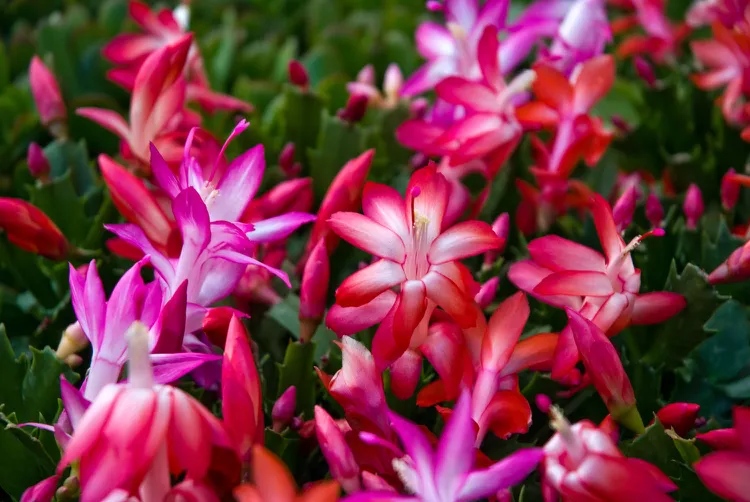During the shortest days of the year, you can count on the colorful flowers of a Christmas cactus to brighten the holidays—but there are times when it seems to bloom about a month too early. What gives? If your plant seems to be jumping the gun, it's likely not a Christmas cactus at all—it's a Thanksgiving cactus. These two plants are very similar in appearance, but there are a few key characteristics that can clear up their true identities. Still, no matter which one it turns out to be, your cactus will likely reward you with colorful blooms throughout the colder, darker months of the year.
Closely Related, Yet Different Plants
Christmas cactus and Thanksgiving cactus are closely related, so it's easy to mistake them for the same plant. Both grow wild in the mountains of southeastern Brazil, so they prefer things on the cool and shady side, unlike the cacti found in desert habitats. This is partly why they make such easy-care houseplants, though they do need more regular watering than a desert cactus would.
Both of these holiday cactus plants have flattened, spineless, segmented green stems, and technically they don't have leaves. They have similar-looking flowers bloom in shades of pink, red, yellow, or white. At first glance, the flowers and stems look the same, but each of these features offers clues to help you distinguish them from one another.
Thanksgiving Cactus vs. Christmas Cactus
Thanksgiving cactus (Schlumbergera truncata) was once commonly called the "crab claw cactus," or "crab cactus," before it started being marketed around Thanksgiving. It also goes by zygocactus at Walmart. You can identify it by the pointy "teeth" on the sides of each stem segment. These teeth are soft, not sharp, and can vary in size, but are almost always visible to some degree.
A Christmas cactus at Etsy, on the other hand, comes from a species called Schlumbergera russelliana with some S. truncata, and possibly a couple of other species, mixed in. The resulting hybrid is known as Schlumbergera x buckleyi and can be hard to find for sale. Its stem segments lack pointed teeth, with more scalloped or rounded edges.
Another way to tell which sort of cactus you have is to look carefully at the flowers, which can bloom anytime in the fall or early winter. Protruding from each blossom, a cluster of long, thin anthers will be tipped with pollen. If the color of the pollen is yellow, you more than likely have a Thanksgiving cactus, and if it's pink, you've got a Christmas cactus.
Types of Zygocactus
When figuring out if you're actually growing a Christmas cactus or a Thanksgiving cactus, the age of your plant is another clue. In recent years, all sorts of new varieties have been produced with characteristics that blur the differences between the two species. These are what you're more likely to find for sale nowadays, instead of the original species-type plants. So if your plant is a young one from a garden center or grocery store, chances are it's a major mishmash between Christmas and Thanksgiving cactus species, and maybe a few other related species.
But if Grandma gave you a cutting off that 50-year-old plant growing on her kitchen counter, you might actually have a straight-up Thanksgiving or Christmas cactus with nothing else mixed in. It's also possible it could be yet another look-alike plant known as the Easter cactus, which typically blooms in spring.
Whether you have a Thanksgiving cactus or a Christmas cactus or something with a blended pedigree, you'll enjoy these plants for what they are: easy-to-grow houseplants that often grace the holidays with their lovely flowers. These long-lived plants can be passed down from generation to generation, or shared with friends from a small stem cutting rooted in a bit of damp potting soil.




















